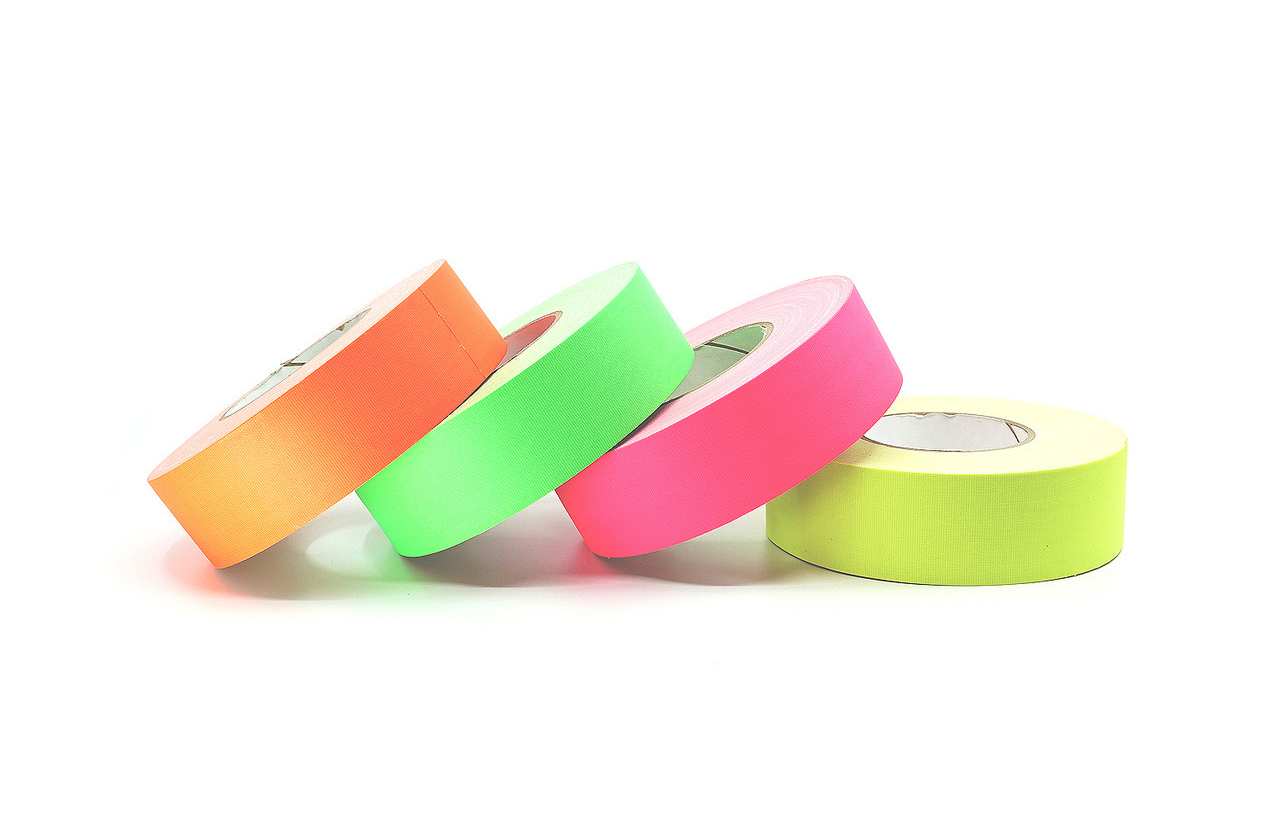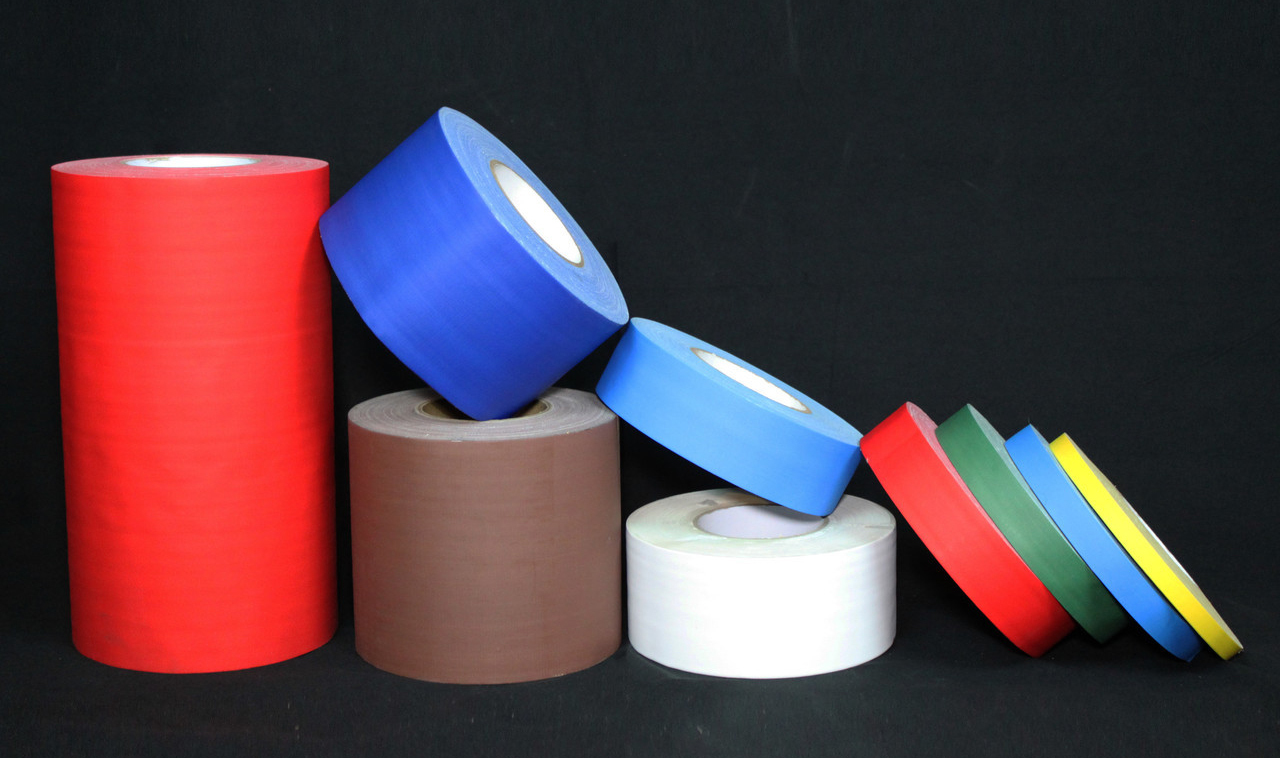Gaffer Tape in TV & Film Production is the Industry’s Unsung Hero
- Camera? Check.
- Lighting setup? Check.
- Cast on their marks and crew ready to work? Check.
Now, all that's left to do is make sure there are a few rolls of gaffer tape on standby, and filming can begin.
Ranking gaffer tape as equally essential to a set as lights or cameras may seem like a stretch. But it's not far off. It's a critical piece of the production puzzle, thanks to its versatility, durability, and clean removability.
If you need cables secured to prevent tripping, marks for the actors' or lighting equipment's positions on the stage, or a quick and easy way to mount or repair something temporarily, gaffer tape can be a lifesaver.
And before you ask: No, duct tape won't suffice. Not every tape is created equal, and there are notable differences between gaffer and duct tape.
Typically, film or television sets require unobtrusive, temporary adhesion, and it is in meeting these needs that gaffer tape shines. Where duct tape has a shiny, glossy finish, gaff tape is made of cloth, keeping it from reflecting or showing up in camera lighting. And because gaffer tape uses non-permanent adhesive, you can remove it from a surface with minimal to no residue - a far cry from the gummy finish duct tape typically leaves behind.
There's no question: if you're on a film or TV set, gaffer tape should be there, too. As they say in showbiz, the show must go on. And having gaffer tape readily available means it can go on smoothly.
What Is Gaffer Tape?
In 1959, photographer and cinematographer Ross Lowell set out to create an adhesive specifically designed for use in the entertainment industry, resulting in the development of gaffer tape.
Gaffer tape - also known as gaff tape, stage tape, theatre tape, film set tape, TV set tape, or gaffer's tape - is a pressure-sensitive adhesive made from heavy cotton cloth. It's known for its matte finish, which helps it blend in with its surroundings, as well as its clean and low-residue removal and durability.
There are various types of gaff tape, and Tape Jungle offers a wide selection. In addition to the classic black, Tape Jungle offers gaff tape in a range of colors, from neutral tones to vibrant fluorescent hues. There are different widths and grades, too, so you'll have no trouble finding exactly what you need.
Specific Tape Jungle gaffer tape offerings include:
- Alanson Standard Grade Gaffers Tape
- Alanson Standard Grade Fluorescent Gaffers Tape
- Polyken Premium Cloth Gaffers Tape
Common Uses on Set
This adhesive is known for its versatility, which, along with its low-to-no-residue removal, makes it the perfect set tape. Here are a few common ways gaff tape gets used on film and TV sets.
Cable Management
Safety is paramount in any work environment, and film or TV sets are no exception. Gaff tape is a crucial safety tool in these environments. It can be used as a cable management tape, securing the many electrical cords in the space to the floor. This helps prevent cast and crew members from tripping over them and hurting themselves or the equipment.
Tape doesn't just make cords and cables less of a tripping hazard; it can also be a useful organizational tool. A few strips of gaffer's tape around a bundle of cords can prevent them from becoming tangled up or intertwined with others, making the set look a little neater.
Lighting Control
It isn't uncommon for lighting designers to keep gaffer tape nearby. You can use it to safely block off unwanted light in the environment or secure gels to the front of your lights.
Marking Positions ("T-marks")
When it comes to where and how they stand during scenes, film and TV actors have to be as precise as possible. Positioning themselves even slightly off their marks means that the lighting may not be ideal, and the cameras and microphones may not capture the actors' voices well, if at all.
In situations like these, gaff tape allows you to use a few strips to mark the exact spot where someone needs to stand. Black is often the color of choice for gaffer tape in these scenarios. However, turning to a different color when clearer guidance is needed can help you make marking - and hitting - positions a breeze.
Labeling Gear & Props
One of gaffer tape's biggest draws is that it's easy to write on. That's why every prop master and assistant camera operator, or AC, needs a few rolls of it in their kits. Use it to label cameras, lens caps, prop cases, and more without worrying about tape removal damaging the equipment.
Quick Fixes
Sometimes, things on sets break. When you have to meet a tight shooting deadline, there's not always time to halt progress long enough to fully repair or replace broken equipment. Sometimes, you have to put it back together as quickly as possible. On those occasions, gaff tape comes to the rescue.
The durable, easy-to-tear tape keeps broken items intact long enough to get through a scene. When the director calls 'cut' and you can peel the tape off, note how clean and easy the tape removal process is. Quick repair and no mess left behind - it's a win-win.
Why Professionals Prefer It Over Alternatives
Several qualities make gaff tape the ideal set tape, including:
- It leaves no sticky or gummy residue upon removal, unlike duct tape.
- It's easy to tear and apply - no special tape dispenser necessary.
- It boasts a non-reflective matte finish that allows it to blend seamlessly into the space.
- It's designed to withstand high heat. So, there's no need to worry about the adhesive melting under stage lights or in the sun during outdoor shoots.
When you order from Tape Jungle, you can choose between standard and premium-grade gaffer tape. The former is best for all-purpose use, while the latter's industrial-grade adhesive makes it more suitable for more extreme conditions. With numerous color options, various widths, and individual roll or bulk order pricing to select from, you're sure to find exactly what you need at a competitive price.

Specialty Colors and How They're Used
Black is probably the most commonly used color for gaffer tape. Black makes it discreet, helping it blend in with whatever it's stuck to. However, gaffer's tape comes in other colors, too, and there's a time and place for each.
Here are two reasons to consider using non-black gaffer tape on a film or television set.
- To keep things organized. Having multiple colors of gaff tape on hand can keep crew departments from mixing up their gear. Use a few strips of the tape in colors other than black to create a color-code system or to use as labels.
- For visibility in low-light situations. One key perk of using black gaff tape is that it's generally inconspicuous. However, some scenarios require something more noticeable. That's where fluorescent gaff tape can prove useful.
Gaffer Tape as a Creative Tool
Aside from its more practical uses, such as organization or repairs, gaff tape can also serve as a creative solution to problems that may arise on set.
If professional rigging tools aren't available, a few strips of gaff tape can save the day by securing equipment to other structures or each other.
And should you need to outline a stage or block off specific areas on the floor - like walkways or hazard zones - gaffer tape is a practical and inexpensive floor marker.
Tips for Choosing the Right Gaffer Tape
There are a few things to consider before ordering gaffer tape.
First, decide what you'll be using it for, as different uses may call for different grades or colors. If you are using gaffer's tape for organizational purposes on set and plan to exclusively use it to create labels, you'll need bright, fluorescent colors. If you'll be using it to mark actors' scene positions, however, you're probably better off ordering classic black tape.
Next, consider the environmental conditions you'll be working in. If you expect your gaff tape to be used indoors and away from lighting setups, you can likely get away with using standard-grade gaffer tape. However, if filming takes place outside in the heat or you'll be using the adhesive to secure gels to hot lights, premium-grade gaffer tape is ideal since it's designed to withstand higher temperatures than its standard counterpart.
Finally, consider what you'll be sticking the tape to and for how long. Gaffer's tape is most commonly a short-term adhesive, but for longer-term holds, premium-grade gaffer's tape and its industrial-strength adhesive get the job done.
Go On Set with Gaffer Tape
Although often overlooked in favor of more obvious choices like lights or film equipment, gaff tape is an unsung hero of any stage, television, or film production. It does it all, from repairing props to securing cables so the cast and crew stay safe. That's why it's a must-have in every crew member's toolkit.
To make the most of this versatile adhesive, you'll need high-quality gaff tape, like the products offered by Tape Jungle. With various colors, widths, quantities, and grades to choose from, you'll find exactly what you and your production need.
And if you're unsure what kind of gaff tape would be most useful on your set, contact Tape Jungle today. Our expert support team will guide you to the right roll.


 Canadian Dollar
Canadian Dollar

